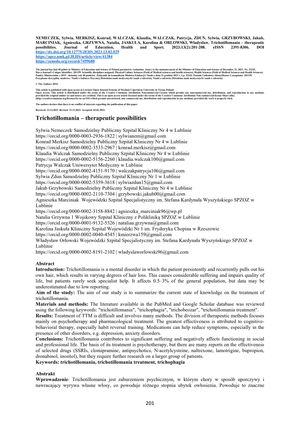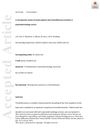Trichotillomania – Therapeutic Possibilities
January 2023
in “
Journal of Education, Health and Sport
”

TLDR Cognitive-behavioral therapy with habit reversal training is the most effective treatment for trichotillomania.
Trichotillomania (TTM) is a mental disorder characterized by compulsive hair-pulling, affecting 0.5-3% of the population and often coexisting with anxiety and depression. The most effective treatment is cognitive-behavioral therapy (CBT) with habit reversal training (HRT), which helps patients identify triggers and replace hair-pulling with alternative behaviors. Other psychotherapies and pharmacological treatments, including SSRIs, clomipramine, and N-acetylcysteine, show promise but require further research. Despite its significant impact on quality of life, many patients do not seek specialist help, highlighting the need for accessible and comprehensive treatment options.



